13 Things to do in Cartagena, Spain
Sitting on Spain’s southeast coast cusp, Cartagena harbours a rich Roman history, mesmerising marble-made Art Nouveau buildings, and a coastline that epitomises your archetypal Mediterranean summer. Let’s check out the best things to do in Cartagena, Spain.
Situated in the region of Murcia, the millennia-old city of Cartagena is one of a kind. This spot is often overlooked by prominent Spanish cities like Barcelona and Alicante, making for a stellar sojourn.
Here’s what we cover in this guide:
Roman Theatre
ARQUA Museum
Cala Cortina Beach
Palacio Consistorial in Cartagena
Playa de Calblanque
Archaeological Museum
Casa de la Fortuna
Calle Mayor
Bateria de Castillitos
Castillo de la Concepcion
Military Museum
Naval Museum
Spanish Civil War Museum
More Things to do in Cartagena
Best Time to Visit Cartagena, Spain
How to Get Around Cartagena, Spain
FAQs
Roman Theatre
As a city that’s survived more than two millennia, Ancient Roman history still prevails in Cartagena. The city has many ruins and remnants, including the second-largest Roman Theatre on the Iberian Peninsula. This 2,000-year-old amphitheatre once housed up to 6,000 people and was only recently discovered in the 80s after being masked by the destruction of the Spanish Civil War.
This is one of the top things to do in Cartagena, Spain, especially if you want a taste of the city’s extensive history. Located inside a picture-perfect pink building and spread over three floors, The Museum of The Roman Theatre of Cartagena boasts a rich collection of ancient Roman artefacts, ceramics, and statues.
The museum boasts an array of displays and audiovisuals, all with panels in both English and Spanish. Follow the glass bridge through to the actual theatre, and don’t forget to head to the third tier for outstanding views of the Cathedral of Cartagena and the ancient remains of a Byzantine Wall. This gem is amongst one of the city's most impressive sites.
You can even purchase a multi-ticket to access Cartagena’s multiple Roman sites, with a guide to the city’s complicated ancient history. Keep things budget-friendly with this Roman Theatre, Forum, Castle & Panoramic List ticket.
How to get to the Roman Theatre of Cartagena:
You can access the Roman Theatre via the entrance of the museum. This is situated on Plaza del Ayuntamiento, right before the City Hall. You can also peek at the theatre near the peak of Conception Hill.
When to visit:
During high season (1st May to 30th September), the Roman Theatre is open Tuesday to Saturday from 10 am to 8 pm and on Sundays from 10 am to 2 pm.
During the low season (1st October to 30th April), the Roman Theatre is open Tuesday to Saturday from 10 am to 6 pm and on Sundays from 10 am to 2 pm.
ARQUA, Marine Archaeology Museum
Nestled in one of the Mediterranean’s most ancient harbours, the national centre for marine archaeology is a must-see when visiting Cartagena. New discoveries are made almost every year, making it the best place to see historical artefacts from underwater sites. On top of the museum, ARQUA is also a research facility for experts and scholars in the field.
Don’t miss the Carthaginian ivory tusks and the treasure of Nuestra Señora de las Mercedes! Dive into the array of archaeological gems in the laboratory area and discover the kid-friendly interactive displays. If you’re searching for unique things to do in Cartagena, ARQUA is a top pick.
Cala Cortina Beach
What better way to recharge your batteries than to plant your ass in the sand with a beer in one hand and a good book in the other?
The Cala Cortina is the only beach located within the heart of Cartagena. So, this would be your best option if you don’t have a car or another form of transport. Cala Cortina boasts stunning scenery and turquoise water, and a handful of restaurants and beach bars spanning the area.
Palacio Consistorial in Cartagena
Throughout the 19th century, Cartagena was hit with a mining boom that brought a lot of wealth to the area. The historic heart of Cartagena was taken by storm with Art Nouveau architecture.
One of the most prominent examples is the Palacio Consistorial de Cartagena, tucked in the Plaza del Ayuntamiento.
The Palacio Consistorial de Cartagena consists solely of white marble and is decked out top to bottom, with a triangle-shaped floor and impressively gigantic domes.
There are even a handful of bullet holes around the building; all left as a trace of the Civil War. If you’re a history and architecture fan, this is one of the best things to do in Cartagena, Spain.
This modernist masterpiece is now the administrative home of the Council of Cartagena. The town will also feature two exhibition halls available for public visits, concerts, events, and other functions. There is, however, a small entry fee.
*There are English-speaking guided tours available. These can e pre-arranged for groups at the tourist office.
When to visit the Palacio Consistorial in Cartagena:
Tuesdays to Fridays: 10 am to 1.30 pm; 5 pm to 7 pm
Saturdays: 10 am to 1.30 pm; 5 pm to 8 pm
Sundays: 10 am to 1.30 pm.
Playa de Calblanque
What would a trip to Cartagena be without a splash of sun and sand?
After tourist-ing your way around Cartagena’s myriad of Roman ruins, you’ll likely need a quick dip to refresh yourself.
For a day you won’t regret, the Playa de Calblanque boasts 300 metres of fine, golden sands. Situated only a 30-minute drive from Cartagena in the southern end of La Manga, the Playa de Calblanque is the perfect day trip. Top tip: Don’t forget to pack some refreshments and snacks, as no chiringuitos (beach bars) are around. A beach day is easily one of the best things to do in Cartagena, Spain.
Archaeological Museum
Enclosing the necropolis site, the Archaeological Museum uncovers finds from the seventh to the third century BC. This museum in Cartagena outlines the city’s riveting history, offering insight into prehistoric tools, Bronze Age pottery and ancient Greek ceramics. The Archaeological Museum also showcases the 2,000-year history of the varied civilizations that have colonised Cartagena, including the Carthaginians, Romans, Vandals, Visigoths, Byzantines, Muslim Moors and Christians,
Casa de la Fortuna
Explore Casa de la Fortuna, where you’ll see how Roman Cartagena’s wealthy citizens once lived. Come face to face with the remaining decorations, mosaic floors, time-worn walls and the stretch of Roman road nearby.
Look out for the hallway (atrium), bedrooms (cubiculum), dining hall (triclinium) and the owner’s office (tablinum). Casa de la Fortuna is worth seeing if you’re looking for unique things to do in Cartagena, Spain.
Calle Mayor
If you’re heading to Cartagena, you’ll likely find yourself strolling through the pedestrian-dominated Calle Mayor. The street is lined with modernist Art Deco buildings, unique boutiques, local restaurants and your stereotypical Spanish tapas bars.
Sit at one of the many eateries and order a plate of patatas bravas or croquettes. If you’re a beer lover, check out the region’s speciality, Estrella de Levante. And, if you’re more of a fan of wine, my best advice is to ditch the tourist trap that is Sangria and order a Vermut Tinto instead.
Calle Mayor links the Plaza de San Sebastián with the oh-so-prominent town hall. If you’re looking for a spot to strut your stuff, this major street is one of the top-notch things to do in Cartagena, Spain.
The street’s strikingly blue-marble tiles contrast its surroundings and will leave you speechless.
When to visit the Calle Mayor
If you’re keen to get amongst the bustling atmosphere of Cartagena’s main street, head down anywhere between 10 am-12 pm or later on in the day around 3 pm-8 pm.
If you’re seeking more of a serene stroll down Calle Mayor, I’d recommend strutting your stuff in the early morning (before 9 am) or the later evening (after 8 pm).
Batería de Castillitos
Located about a 30-minute drive from Cartagena, the Batería de Castillitos boasts a bounty of breathtaking views of the castle, coastline, and surrounding mountains.
Sitting at the peak of Cape Tiñoso, this 1930s castle features medieval towers, an eerie gun collection, and an underground network of tunnels.
As one of the top things to do in Cartagena, Spain, visiting the Batería de Castillitos is a must if you’re a fan of panoramic scenery!
Top tip: Ensure your phone has enough battery to explore the tunnels with your flashlight. There is no lighting down here... And, on another unrelated, related note, there are no toilets and no stores, so prepare your stash of snacks, and try to empty out ye ol’ bladder beforehand.
How to get to the Batería de Castillitos:
From Mazarrón, take the RM-332 road, turn off at the roundabout onto the E-22, continue towards El Mojón and then through Isla Plana. Then, take a right onto the RM-E23 towards Campillo de Adentro, and continue until you cross the Rambla de Azohia. From this point onwards, you’ll need to follow a narrow, winding road to reach the parking area on the peninsula.
Castillo de la Concepcion
Boasting some of the best views over the Cartagena, Castillo de la Concepción sits at the city’s highest summit. Constructed on the site of a Roman temple and later converted into a Moorish fortification, Castillo de la Concepcion became a medieval fortress after the Christian reconquest of Spain. Up until the Spanish Civil War, the castle was used as a lookout for incoming attacks.
Bask in the panoramas on the glass lift, meander around the lush gardens and learn about the history at the Centro de Interpretación de la Historia de Cartagena.
Military Museum
Sitting in the heart of Artillery Park, the Military Museum hosts one of the most extensive displays of weapons in Spain. Sitting in an age-old building from the 18th century, the museum is illustrated with intriguing arched vaults and towering stone pillars. The eclectic array of exhibits outlines the history of artillery. You’ll find different displays of models, records, weapons, uniforms, paintings and illustrations.
Take a tour through the cannon room, see the ammo in the ammunition room and set your sights high in the aircraft artillery room. The Military Museum is one of the best things to do in Cartagena, Spain if you’re interested in the country’s history.
Naval Museum
Calling all history fanatics!
The Naval Museum exhibits everything ‘under the sea’, from boat construction and naval uniforms to art and seafarer living. You’ll find the 19th-century, Isaac Peral Submarine, the world’s first electronically-powered submarine. Admire the award-winning architecture in the building and look out for the clash of original 18th-century prison design and modern-day 21st-century style.
Spanish Civil War Museum
Cartagena, Spain really is an oasis for museum maniacs - the list goes on and on…
Back when the war ran ravage from 1936-1939, Cartagena, Spain suffered one of the dimmest moments in the country’s history. As a Republican military defence site, the city became a target of bombing raids by the Nationalist forces. In turn, shelters were built to try and protect people from the destruction.
In the Spanish Civil War Museum, you can get a better insight into what civilians had to do to survive. You’ll encounter authentic signs, propaganda posters and various other artefacts.
More Things to do in Cartagena, Spain
Got more time to kill? Check out the following hot spots in Cartagena, Spain.
National Museum of Underwater Archeology
Escombreras
El Mirador del Roldán
Submarine Peral
Parque Tentegorra
Castle of Galeras
Best Time to Visit Cartagena, Spain
The best time to visit Cartagena, Spain, depends on your travel style, personal budget and what you want to experience. Situated in the southeastern part of Spain, Cartagena boasts a Mediterranean climate with pleasant winters and scorching hot summers. Here is a basic breakdown of what to expect in each season.
Spring (March to May): Spring is one of the best times to visit Cartagena, Spain. The weather boasts pleasant temperatures from around 15°C to 25°C (59°F to 77°F). If you’re interested in enjoying outdoor activities and exploring the surrounding landscape, you can comfortably sightsee without the summertime heat and crowds.
Summer (June to August): The summer can reach soaring highs in Cartagena, with temperatures well above 30°C (86°F). If you enjoy the heat and want to spend most of your time at the beach, this is your best bet. As it’s high season, you can expect higher prices on accommodation, activities and transport, so be prepared to pay the price.
Autumn (September to November): The autumn season in Spain boasts mild temperatures and fewer crowds than the summer. This is one of the top times for sightseeing, cultural events and outdoor activities. If you’re a budget traveller, autumn is a great pick.
Winter (December to February): Compared to many other European cities, the winter in Cartagena is mild with temperatures around 10°C to 18°C (50°F to 64°F). If you want to escape the tourist hordes and enjoy more affordable prices, winter could be the ideal option.
How to Get Around Cartagena, Spain
Cartagena is a relatively compact city, making it easy to get around by foot or public transport. The best way to get around depends on your itinerary, budget and preferences, and you can mix and match depending on the distance and locations you want to see. Here are the most common ways to get around Cartagena, Spain.
Walking
Cartagena's city centre is largely pedestrian-friendly and a handful of the major attractions, shops and restaurants are within short walking distance of each other. Discovering the historic streets on foot allows you to dive deeper, soak up the atmosphere and uncover hidden gems along the way. Walking is one of the best ways to get around, especially in spring and autumn. If you want to speed things up, you could also consider renting a bicycle to explore the coastal routes.
Public Transportation
Cartagena boasts a well-developed public transportation system of buses. EMT Cartagena runs the city's bus service and connects different neighbourhoods and attractions. Getting around by bus is one of the most cost-effective ways to travel in Cartagena, Spain.
Car or Motorbike Rental
If you want to usher more freedom and flexibility into your itinerary, renting a car or motorbike is an ideal choice. Hiring a car allows you to discover the surrounding region and nearby attractions at your own pace, and on your own timetable. While renting a motorbike is the more budget-friendly option, a car is best for the summer months when the heat kicks in
FAQs
What is Cartagena in Spain known for?
Cartagena is famous for its rich maritime history and Belle Epoque architecture.
How many days do you need in Cartagena, Spain?
One day is enough to tick off all the bucket list items in Cartagena, Spain.
Is there an Old Town in Cartagena, Spain?
The Old Town of Cartagena dates back to 223 BC. Plenty of memorials of the Spanish Civil War and stunning architecture from the Belle Epoque era exist.
So, that’s that—the top sights to see on Spain’s southeast coast. Cartagena’s rich Roman history, marble-made Art Nouveau buildings, and turquoise coastline will leave you crawling back for more.
If you’ve only got time for a quick day trip, you could easily smash out some of the best things to do in Cartagena, Spain, within that time frame. ¡Gracias!

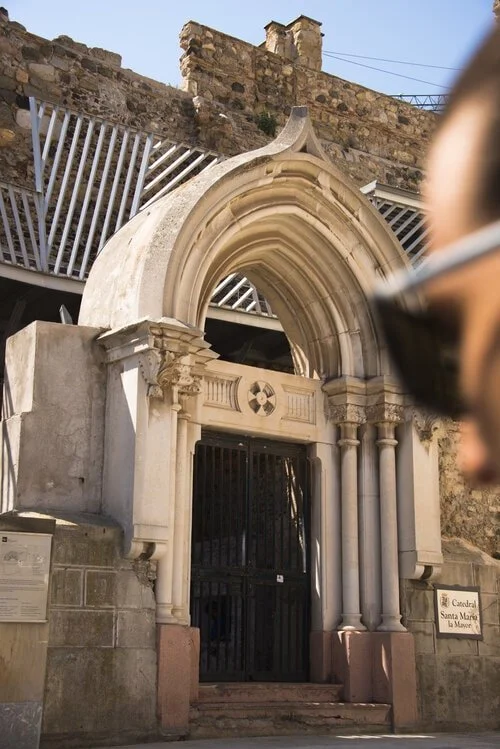

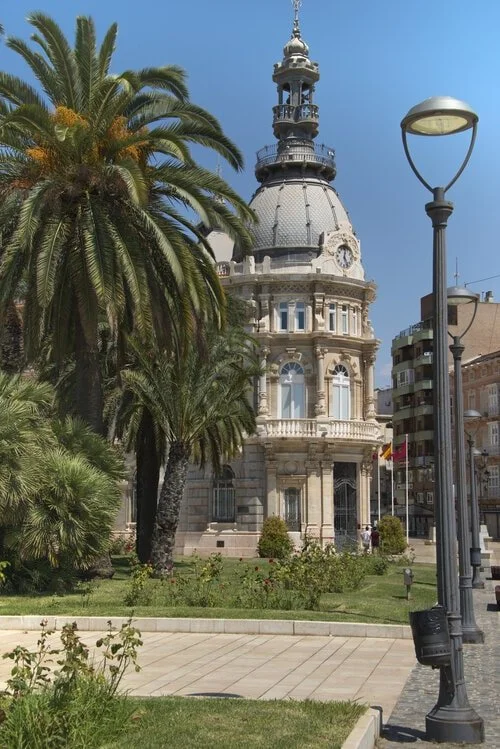

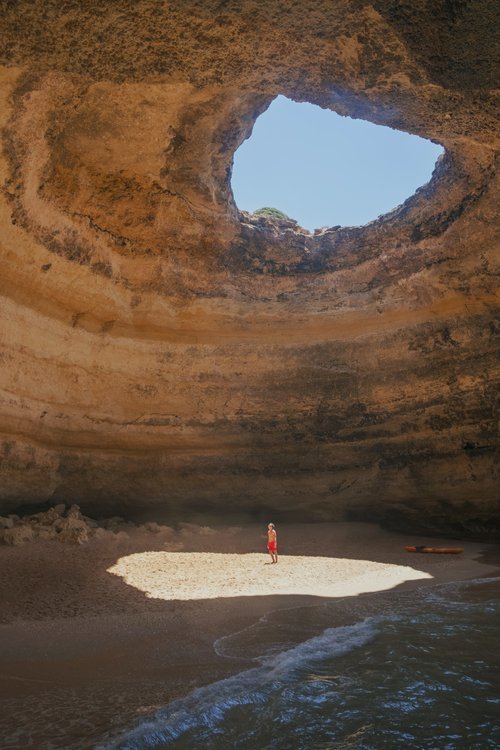

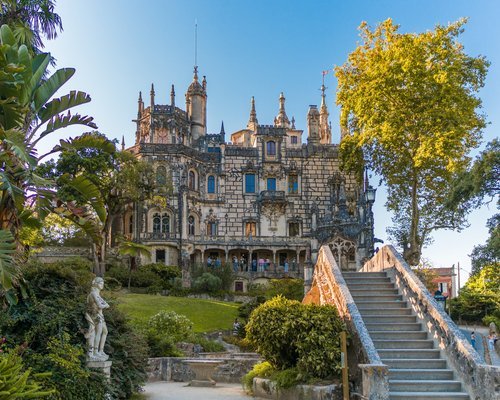

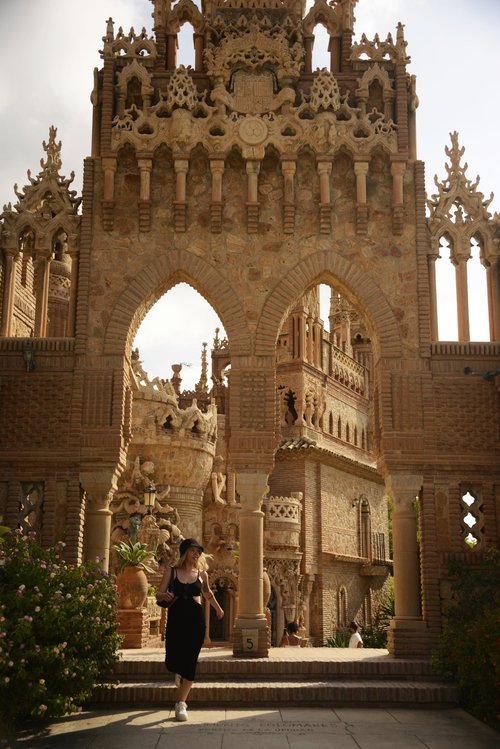
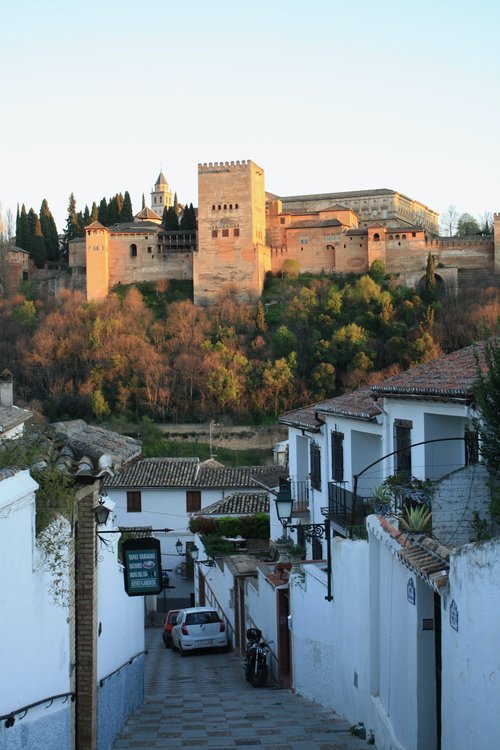


Rome is known for its historical monuments, colourful culture and delectable cuisine. There’s plenty to pack into your itinerary, but if you tire of Italy’s capital, escape on one of these day trips from Rome.